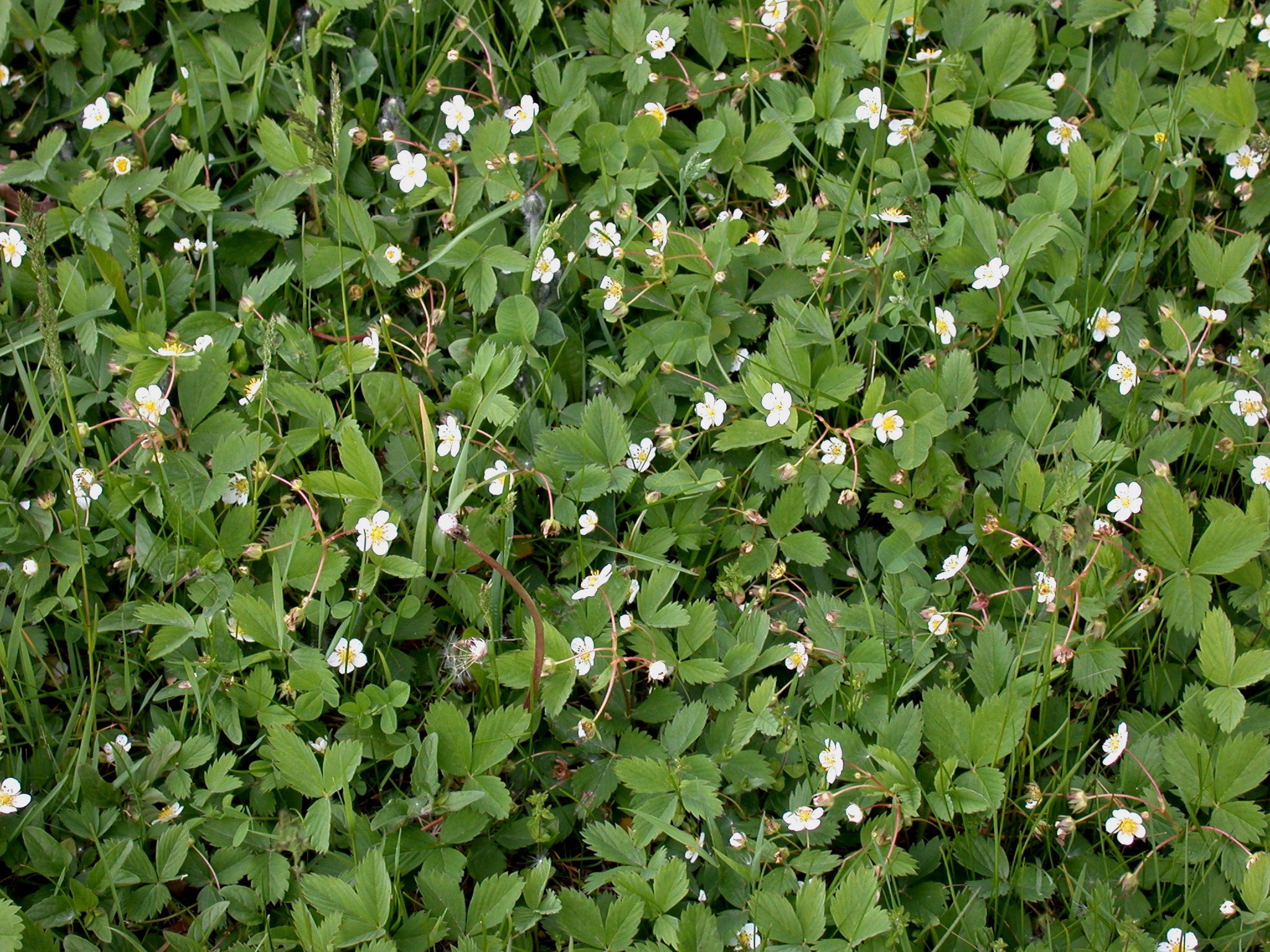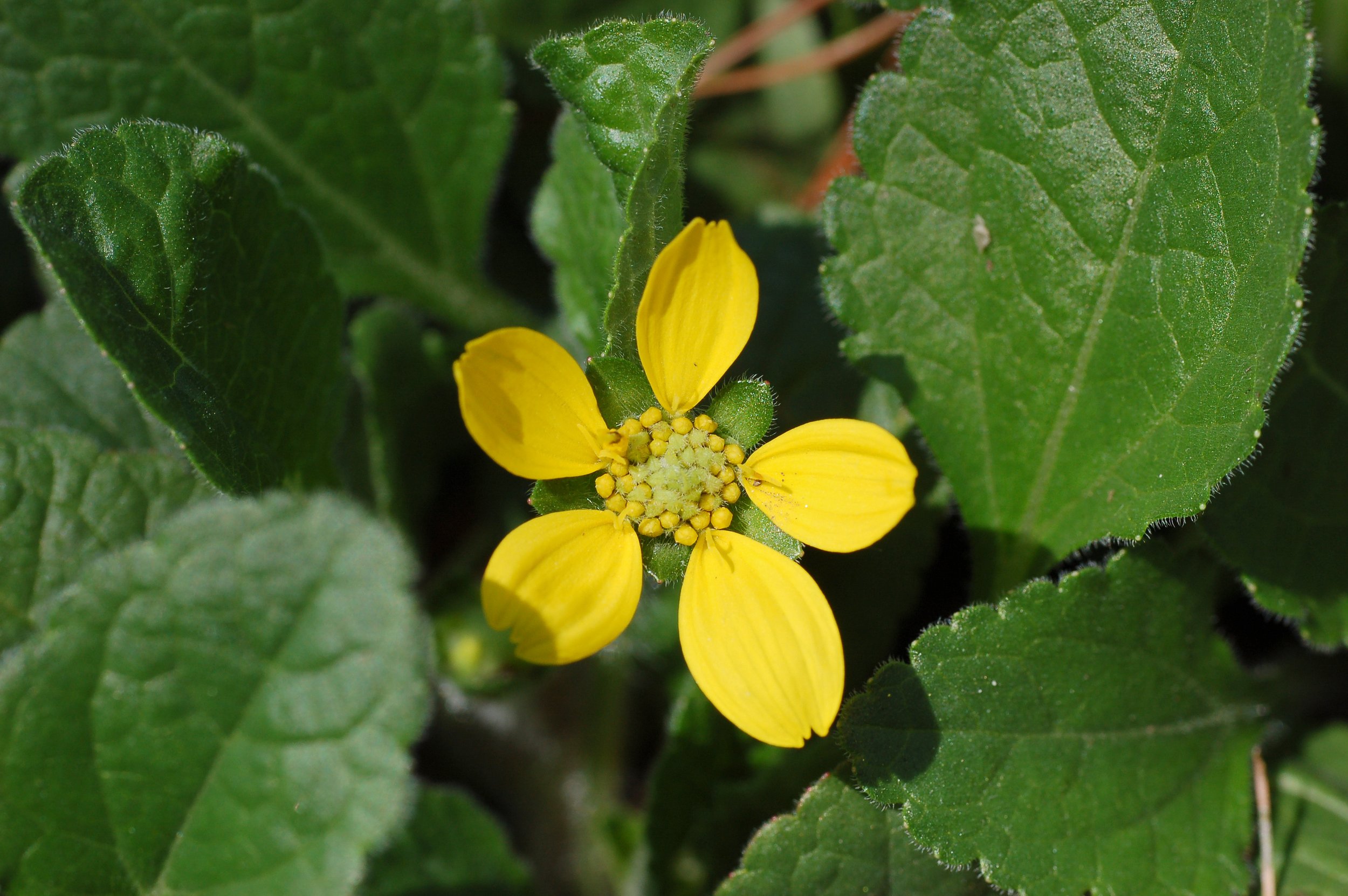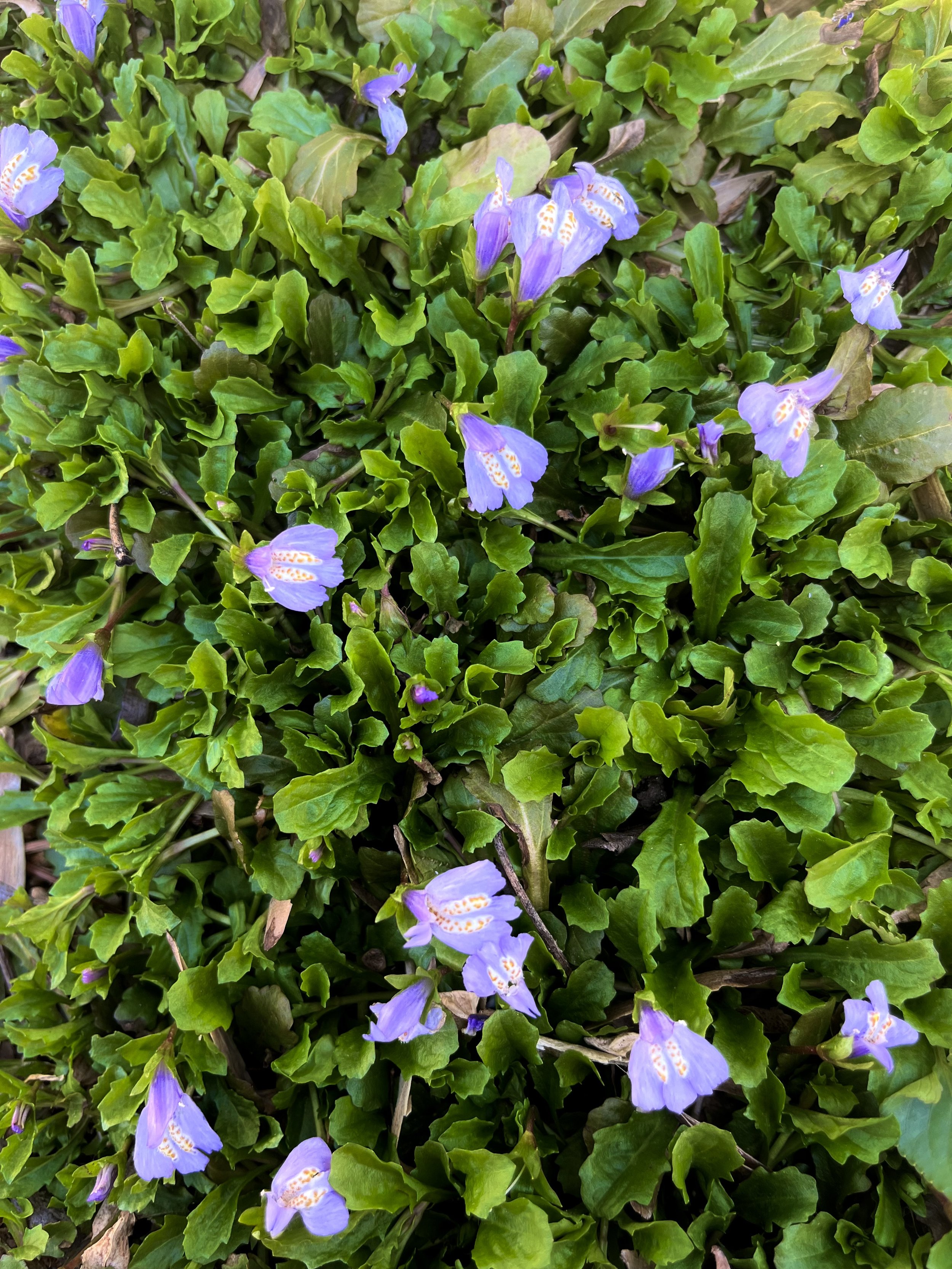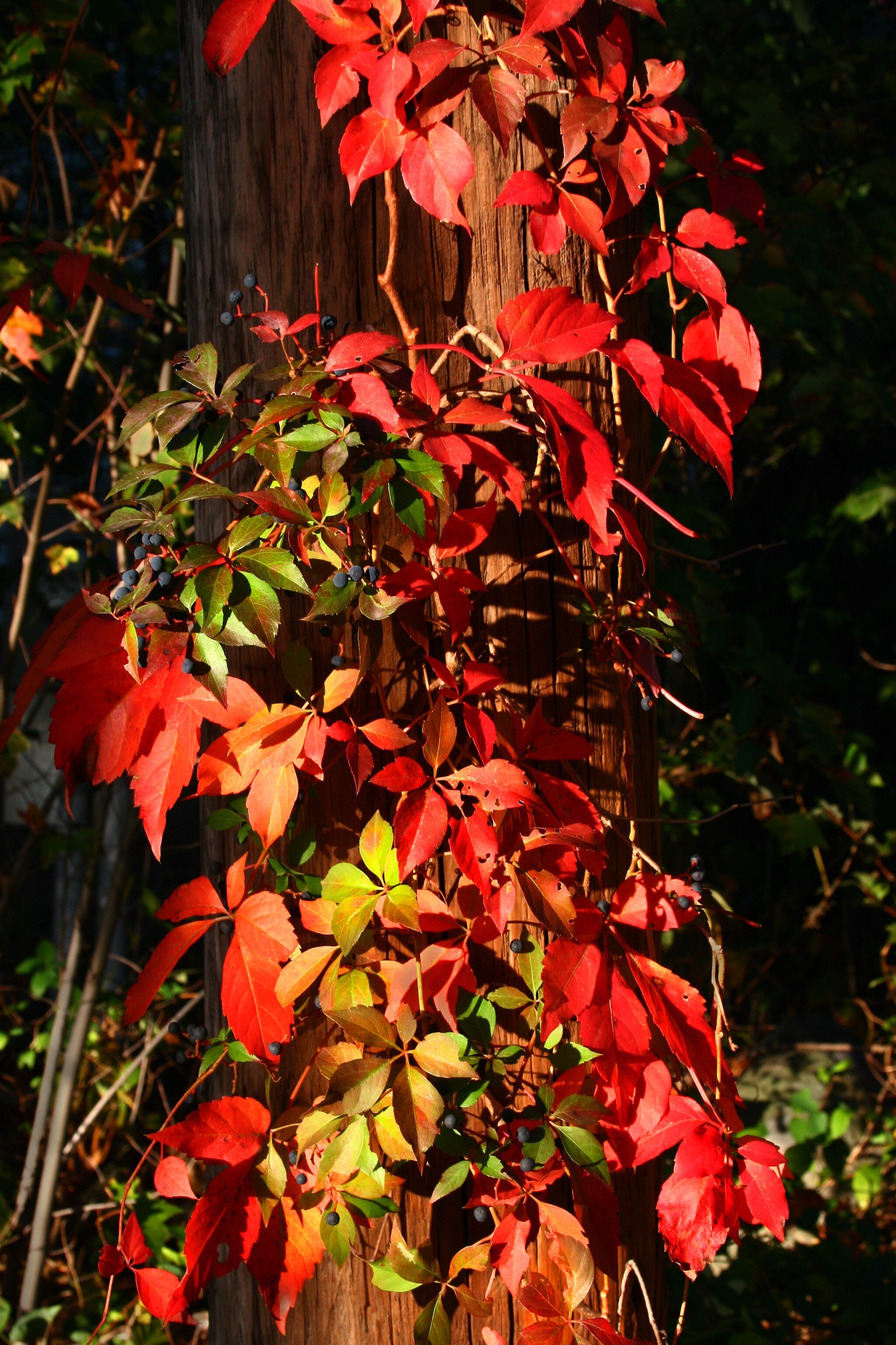A few fabulous groundcovers
Long ago on my property in Sandy Springs (north Atlanta area), some well-meaning previous owner decided to plant a few not-so-fabulous groundcovers. We have a lot of english ivy and a lot of periwinkle / vinca vine. We are slowly closing in on their territory, taking back a little more each year, but these guys are resilient (I think our next move will be renting goats)! Of course, we also have regular old weeds that like to pop up in our garden beds and mulched areas. But sometimes it’s true that the best defense is a good offense, so one of the best ways to battle undesirable plants is to combat them by planting lots of healthy, vigorous, desirable plants. In order to plant densely around your shrubs, trees, or perennials, and avoid having bare soil (AKA free real estate for opportunistic plants), you need groundcovers. Mulch, pine straw/needles, and fallen leaves can be good, but living groundcovers are even better.
Bare soil doesn’t retain moisture or nutrients well, it’s prone to erosion, and it’s basically like rolling out the welcome mat for weeds to show up.
Here are a few of my favorite (mostly evergreen, and mostly native) groundcover plants:
Native strawberry (fragaria virginiana or vesca): Zones 5a-9b — semi-evergreen in some areas, it usually stays nice and green for me year-round in Atlanta. It will send out long runners and create new baby plants at every node (some say a bit too aggressively for their liking—I wouldn’t recommend planting in a vegetable bed). Anywhere you might typically put mulch, gravel, or grass, it can probably serve as an adorable groundcover with little white flowers. The tiny fruits (if you get them before the birds or chipmunks do) are just a bonus! ‘Virginiana’ supports 75 different species of butterflies and moths, and is Native to most of North America. These plants prefer part sun and regular watering, but they are adaptable (they just won’t really fruit in shade, and they might go dormant in the heat of summer if planted in full sun). Tolerates some foot traffic. Not to be confused with mock strawberry, which has yellow flowers and is native to Asia. You can also use garden strawberries (June or everbearing) as a groundcover, and you’ll get much bigger berries than with the native species. People have differing opinions about whether native strawberries or garden strawberries are more “assertive” as groundcovers— it probably depends on your area and growing conditions.
Green and gold (chrysogonum virginianum or repens): Zones 5a-9b — a well-behaved and reliable evergreen groundcover with golden flowers in spring/summer. It will spread out slowly and form a dense mat that keeps weeds at bay. Thrives even in deep shade, but can take some sun with regular watering. Native from around Pennsylvania down to Florida and over to Louisiana. Easy to divide in order to help it spread. Tolerates a little foot traffic.
Creeping Mazus (Mazus reptans/miquelii): Zones 5a-8b — evergreen down to around Zone 7(ish) with tiny white or purple flowers around June/July, depending on variety. Spreads out quickly but not too aggressively. I use it between stepping stones and as a green mulch around the edges of pathways. Native to Asia and the Himalayas. Full sun to part shade. Tolerates moderate foot traffic.
Partridgeberry (mitchella repens): Zones 3a-8b — with little white flowers in spring/summer and small red berries in winter, this evergreen vine makes a delightful little border plant. It spreads very slowly, so probably not a great choice to cover a large area, but it likes both sun and shade so it’s perfect for planting underneath a deciduous shrub for some winter interest.
Virginia creeper (parthenocissus quinquefolia): Zones 3a-10b — okay, now I’ve lost some of you. I realize that this plant has a rather aggressive and weedy reputation. It’s true that it’s a vigorous grower that can basically survive anywhere (clay, sand, sun, shade, you name it). The main reason I recommend this plant is that it can be a good alternative to invasive english ivy. Although it isn’t evergreen in Atlanta, it shows off absolutely STUNNING fall color, provides a great food source and cover for lots of native wildlife, and it can spread over an area (or fence) quickly when you need it to. It also doesn’t tend to damage structures and trees as easily as english ivy does. It looks similar to poison ivy (except that it has 5 leaves, not 3) and its fruits are poisonous if eaten. It’s a popular ornamental in Europe!
Blue rug juniper (juniperus horizontalis): Zones 3a-9b — there is a reason you see this everywhere. It’s an evergreen that can survive in dry, rocky areas, and can stabilize a slope. It likes full sun but will tolerate some shade, and doesn’t spread too aggressively. It’s native to the northern part of North America, and birds like the berries. The blue-tinged foliage can provide contrast against other greenery, and in colder areas will turn a purplish-bronze in winter.
Foamflower (tiarella cordifolia): Zones 3a-8b — a shade-loving semi-evergreen with ethereal, white or pinkish flowers that bloom for about 6 weeks in spring. The leaves on my variety turn a nice purple hue in winter. It needs little care, spreads on its own (but not aggressively), and it’s easy to divide.
Yarrow (achillea millefolium): Zones 3a-9b — with umbrella-like flowers from around June to September, this feathery, fern-like evergreen is drought-tolerant and can take a little foot traffic. I have lots of it in my meadowy pollinator garden areas, but this year I am sowing seeds into my lawn to hopefully help it become more resilient. The flowers have many reported medicinal uses and are beautiful in bouquets.








I hope that list was helpful! I have also heard good things about creeping thyme, but I am hesitant to recommend it since it’s non-native to the US and I have not personally planted it myself. I have some seeds I am planning to experiment with this year— I will provide an update once I see how it goes! Honorable mentions (which might not perfectly fit into the category of groundcovers) include dwarf hummingbird mint and christmas fern. I have the butter yellow dwarf hummingbird mint in a dry, sunny bed: it smells absolutely divine and attracts all sorts of pollinators and hummingbirds. Christmas fern is a maintenance-free shade plant that stays green even through harsh winters.
If you are looking for recommendations for screening shrubs, you can find a list of my favorites here. And in this article I list 11 plants I urge you NOT to plant! If you want more individualized help and personalized recommendations, I would love to work with you! You can find out more here. Happy growing, everybody!

